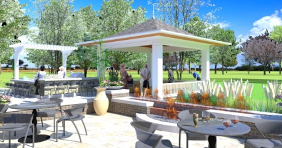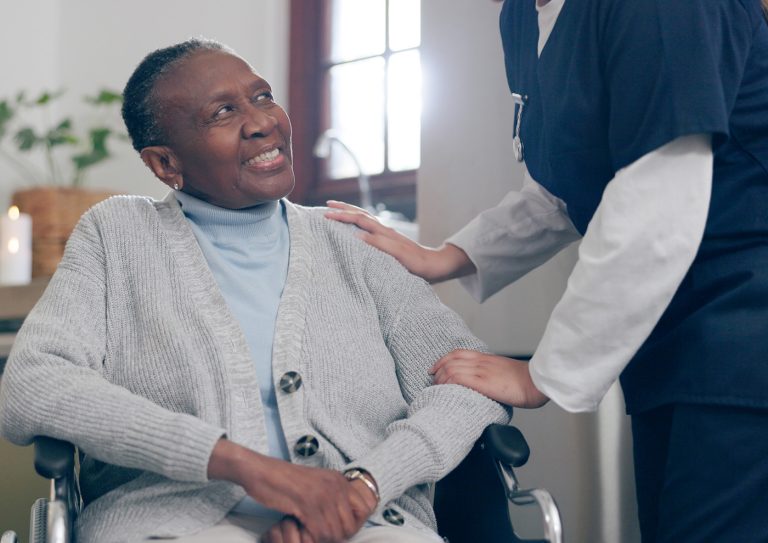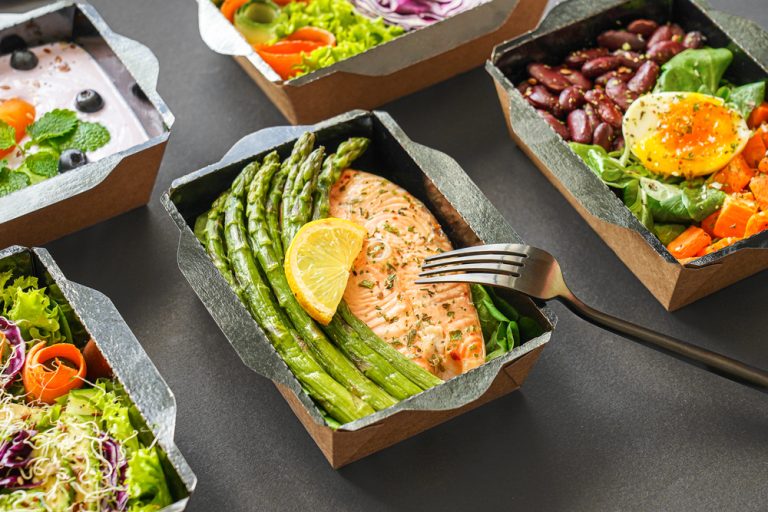
You ring the doorbell. The front door opens, and you’re welcomed inside. You enter a beautifully furnished, inviting space that feels like a comfortable home. To one side is a living room where a small group of caregivers and seniors gathered by the fireplace. The large eat-in kitchen is bustling with activity; there’s a pot bubbling on the stove and mouthwatering smells wafting from the oven. Sunroom windows look out over a garden and fill the room with sunlight. Little details tell you this is a place that’s loved: beautiful art on the walls, soft pillows on a couch, fresh flower arrangements on a table.
The Household Model
This homelike approach to living options is called the household model. It’s part of a national movement to create less-institutionalized long-term care, redesigning the physical environment for care, and rethinking how care services are managed and delivered. The household model is an evidence-based philosophy that puts residents’ wants, needs and abilities first, and promotes a culture of rich relationships and meaningful interactions.
How Does It Work?
The household model is very different from conventional nursing homes with their long hallways, shared rooms and bathrooms, and commercial-style kitchen. In contrast, these small households feature:
- Private suites, each with bathroom and shower
- Shared living rooms
- Large tables for dining
- Open kitchen areas
- Easy access to the outdoors
Fellowship Senior Living began offering the household model in 2018, and serves all levels of care: Assisted Living, Assisted Living with Memory Care Services, Skilled Nursing and Rehabilitation. For small groups of 17 to 20 people per household, we provide a person-directed lifestyle, and more individual care. Households are designed to be relaxed and accessible and feel like a residential home. Residents have their own private room and bathroom. They share access to outdoor spaces and indoor spaces, including a large open kitchen and tables for dining.
The Person-Directed Lifestyle
Life in a household model is tailored to a person’s natural routines. Residents don’t follow rigid schedules but live on their own terms, with more personal choice and with a greater sense of control. An AARP article states the household model has consistent and dedicated team members who see their role as advocates for the people in their care. They spend more time per resident per day on direct care activities compared to staff in standard nursing homes.
Alex Trotta, Director of Resident Services, says, When a resident moves into a Fellowship household, we learn what we call their daily pleasures. This includes when they like to get up and what time they go to bed, how they like their meals, and what they like to do throughout their day. He says it makes anticipating and supporting each person’s individual interests feel natural and seamless. We don’t have to ask we know. For example, we know someone likes to go to church, so we arrange services for them. We know there’s a group of people who like violin music, and we’ll ask a violinist to play for them. We can really tailor our life engagement programs to what people like.
The Household Model and COVID-19
Because the household model is physically self-contained, residents have been better protected during the pandemic. According to a Washington Post article, nontraditional retirement communities like these have had almost no outbreaks of COVID-19 during the pandemic. The smaller size of the community and fewer staff coming in and out of the building reduces the chances of an infection and limits its spread when it does occur. Residents are able to have safe social interactions and feel more engaged and less isolated.
Alex agrees. One of the advantages of the household model is its smaller area. If there is any type of exposure, it’s more easily contained to one household. The other households don’t have to be isolated and can continue with more freedom. This means that, while the pandemic seems to be subsiding but is still present, residents can always count on getting the physician and nursing care they need. They have normal access to rehabilitation therapy, medication supplies and home care, without interruption. Alex agrees, Throughout the pandemic, we have made life as close to normal as possible.
He added that while Fellowship Senior Living has always had emergency protocols in place, he thinks the community is more prepared than ever. We’ve learned so much about COVID-19, and we continue to work closely with in-house experts such as our Director of Clinical Operations, who oversees medical protocols for all levels of care. We make sure we have enough equipment and that teams are educated on what to do. We’ve also been at the forefront of keeping residents socially engaged by screening visitors and bringing people outside or to safe areas to visit.
Discover more benefits of the household model.
Fellowship Senior Living is one of only a handful of senior living communities across the nation to offer the household model, and we’re proud to lead the way for this innovative philosophy in New Jersey. We invite you to learn more about our community, including our vibrant independent living lifestyle. Reach out to us today for more information and answers to your questions.




